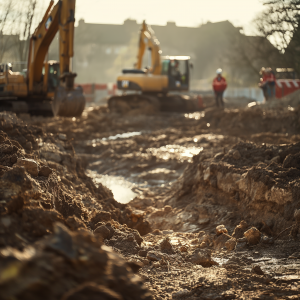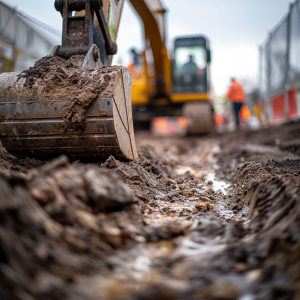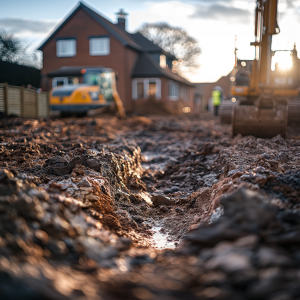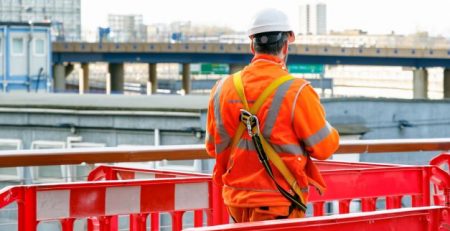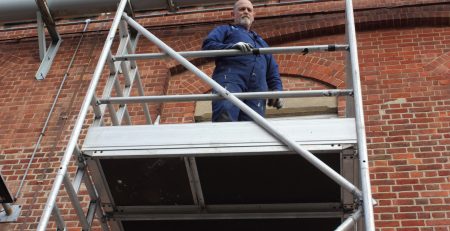Ground Rules: Erosion Control Techniques for Building Sites
Erosion control is a critical concern in the construction industry, posing significant challenges to environmental sustainability and project viability. Water, wind, and construction activities can displace soil and lead to severe environmental and economic repercussions.
Understanding and implementing effective erosion control techniques are essential to mitigate these impacts and ensure compliance with environmental regulations. This overview delves into the dynamics of erosion, explores a variety of control measures, and discusses the strategic implementation necessary to manage erosion effectively on building sites, thus safeguarding the environment while fulfilling construction objectives.
Understanding Erosion Dynamics and Types
Erosion is a natural geological process influenced by several factors, including water, wind, and human activities, particularly construction. It typically starts at the surface where the soil is most vulnerable and can progress to deeper layers if unchecked. This displacement of soil not only leads to significant structural problems for any construction site but poses broader environmental hazards. Key among these are water pollution through the increase of sediments in water bodies, sedimentation that can choke aquatic habitats, and ecological disruption that affects biodiversity in and around the site.
The types of erosion relevant to construction sites primarily include sheet erosion, rill erosion, and gully erosion. Sheet erosion refers to the uniform removal of soil layers by runoff water and is often the first sign that preventive measures are needed. Rill erosion happens as runoff water accumulates in small channels, which can eventually grow into larger gullies if not stabilised early on. Gully erosion is more severe and can cut deeply into the soil, creating large, difficult channels to remediate.
Implementing Control Measures
To combat these challenges, several erosion control measures have been devised, tailored to both the type of erosion and the specific needs of the construction site. These measures include:
- Geotextiles and Geomats: These synthetic barriers serve as soil stabilisers. Positioned at erosion-prone spots, they help reinforce the soil and maintain its structure against the forces of water and wind.
- Concrete Blocks and MSE (Mechanically Stabilised Earth) Walls: These provide structural support along embankments and other high-risk areas. The interlocking systems of concrete blocks can form a robust barrier against soil displacement.
- Riprap and Articulated Concrete Blocks: To protect against surface runoff, a layered arrangement of rock or concrete can be employed. This method effectively disperses the energy of flowing water and reduces its erosion potential.
- Turbidity Barriers and Aqua-Barriers: These floating barriers are deployed in water bodies adjacent to construction sites to contain sediment. Their use is crucial in preserving water quality and complying with environmental regulations.
- Soil Nails: Metal rods or nails are driven into the slopes to stabilise them. This method is particularly useful in urban construction where space constraints prevent the use of wider barriers.
- Vegetative Methods: Strategic vegetation planting can stabilise soil and enhance the site’s aesthetic and ecological value. Plant roots help to bind the soil, thereby reducing erosion and runoff.
- Erosion Control Blankets: These are biodegradable mats rolled out over newly seeded areas. They protect the seed from erosion while it germinates and begins to take root.
- Drainage Solutions: Proper drainage systems, such as French drains, are essential in managing water flow around a construction site. They help divert water away from vulnerable areas, significantly reducing erosion risk.
Technological and Innovative Practices
Advancements in technology have brought about innovative practices in erosion control. One significant development is the use of hydrodynamic and mechanical systems designed to meet a site’s specific challenges. These systems can range from advanced drainage solutions to reinforced barriers that adapt to changing environmental conditions.
Furthermore, software utilisation in construction projects has become critical in managing erosion control. Modern construction scheduling software helps plan and implement erosion control measures more efficiently. By simulating various scenarios and predicting potential problem areas, these tools allow project managers to allocate resources effectively and prevent erosion before it starts.
Environmental and Economic Consequences of Erosion
The repercussions of erosion extend beyond the immediate physical alterations of the landscape, manifesting significant environmental and economic impacts. The loss of topsoil, a critical layer rich in nutrients and organic matter, undermines land productivity and agricultural viability. This degradation can lead to diminished crop yields, increased reliance on fertilisers, and heightened susceptibility to further erosion, creating a deteriorative cycle that can be challenging to break.
Aquatic systems are particularly vulnerable to the effects of unchecked erosion. Sedimentation can suffocate aquatic habitats, disrupting food chains by burying insect larvae and fish eggs and reducing the clarity of water, which is essential for the photosynthesis of aquatic plants. Furthermore, pollutants bound to soil particles, such as pesticides and heavy metals, can be transported to water bodies, leading to contamination that affects both wildlife and human health.
From an economic perspective, the consequences of erosion are equally daunting. Construction projects facing significant erosion may incur substantial costs in remedial measures. The need for additional structural supports, repair of damaged infrastructure, and implementation of advanced erosion control systems can all elevate project budgets considerably. Moreover, failing to manage erosion effectively can lead to fines and penalties under environmental regulations, adding further financial burdens.
Regulatory and Maintenance Aspects of Erosion Control
Adhering to regulatory guidelines and maintaining effective erosion control measures are fundamental to successful construction project management. Regulations vary by region but generally focus on preserving water quality, maintaining soil stability, and protecting wildlife habitats. Compliance is not merely about avoiding legal repercussions; it’s about fostering a sustainable construction practice that benefits both the environment and the community.
Regular inspections and maintenance of erosion control measures are critical. Site-specific strategies might include silt fences, straw rolls, and sediment basins to capture and contain dislodged soil. These measures need regular checks to ensure they remain effective throughout construction, especially after heavy rainfall or in areas of high activity.
Implementation of these controls requires a collaborative approach. Construction firms often work with environmental consultants to tailor strategies that meet both the project’s demands and the regulatory requirements. This collaboration ensures that the most effective techniques are employed, maximising both compliance and environmental protection.
Strategic Implementation and Planning
Implementing erosion control requires a comprehensive and integrated approach. It involves combining physical barriers, such as geotextiles and MSE walls, with vegetative methods and advanced technological systems. This multifaceted strategy not only mitigates the risk of erosion but also enhances the construction site’s resilience against future environmental challenges.
Proactive measures are essential for the long-term sustainability of construction projects. These include planning for potential offsite erosion impacts, such as sediment runoff into nearby water bodies or the effect on neighbouring lands. We can prevent costly remediations and community disruptions by addressing these issues early in the planning stages.
Furthermore, integrating technology in strategic planning allows for more precise and effective management of erosion control measures. Project managers can use sophisticated software tools to predict potential problem areas and deploy resources more strategically. This ensures better protection against erosion and optimises the allocation of materials and labour, reducing waste and improving efficiency.
Conclusive Thoughts
In conclusion, effective erosion control is paramount in safeguarding construction sites and their surrounding environments. We can mitigate erosion’s detrimental effects by combining geotechnical solutions, vegetative strategies, and advanced technology. Regular maintenance, strategic planning, and adherence to stringent regulations are essential to ensure both environmental sustainability and project success.
As we refine these practices, the collaborative efforts between construction firms and environmental specialists will play a crucial role in evolving our approach to managing erosion, protecting our natural landscapes and ensuring economic viability.


